New York, NY
Weather Forecast Office
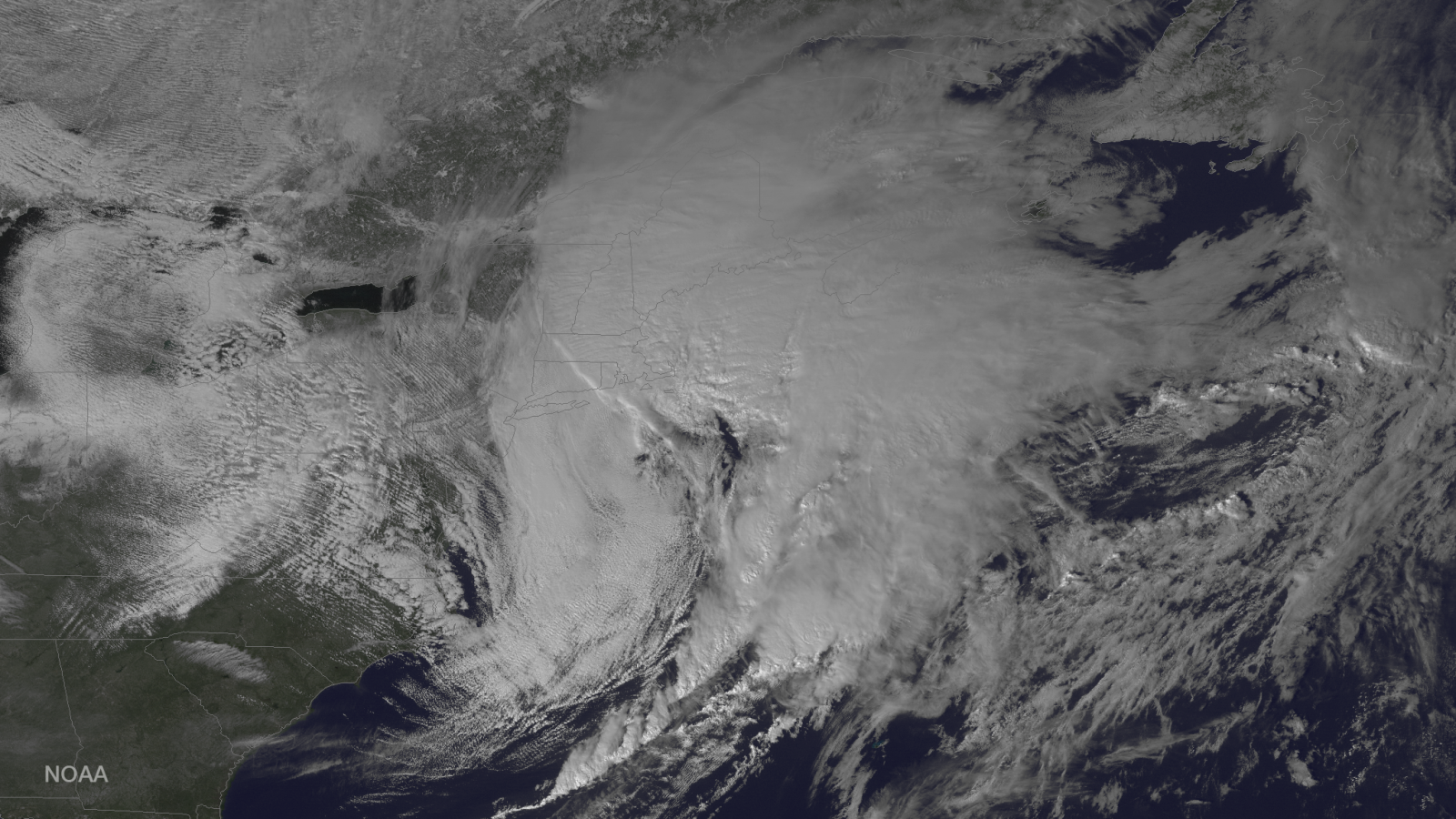 |
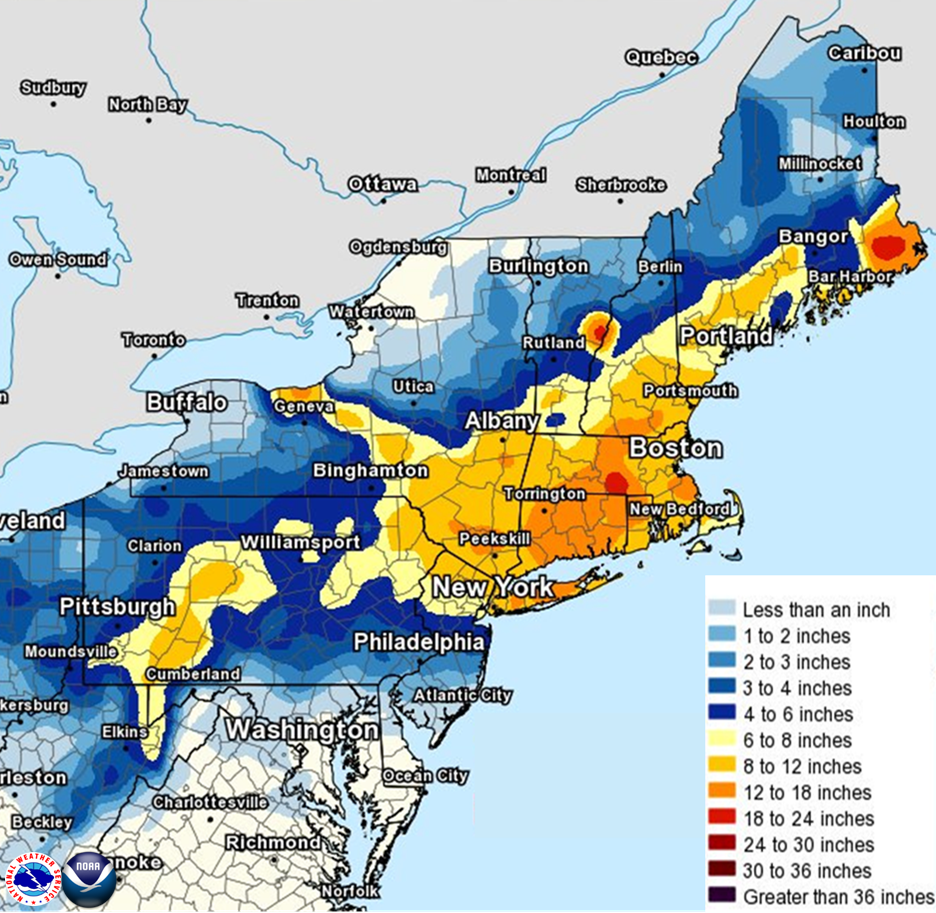
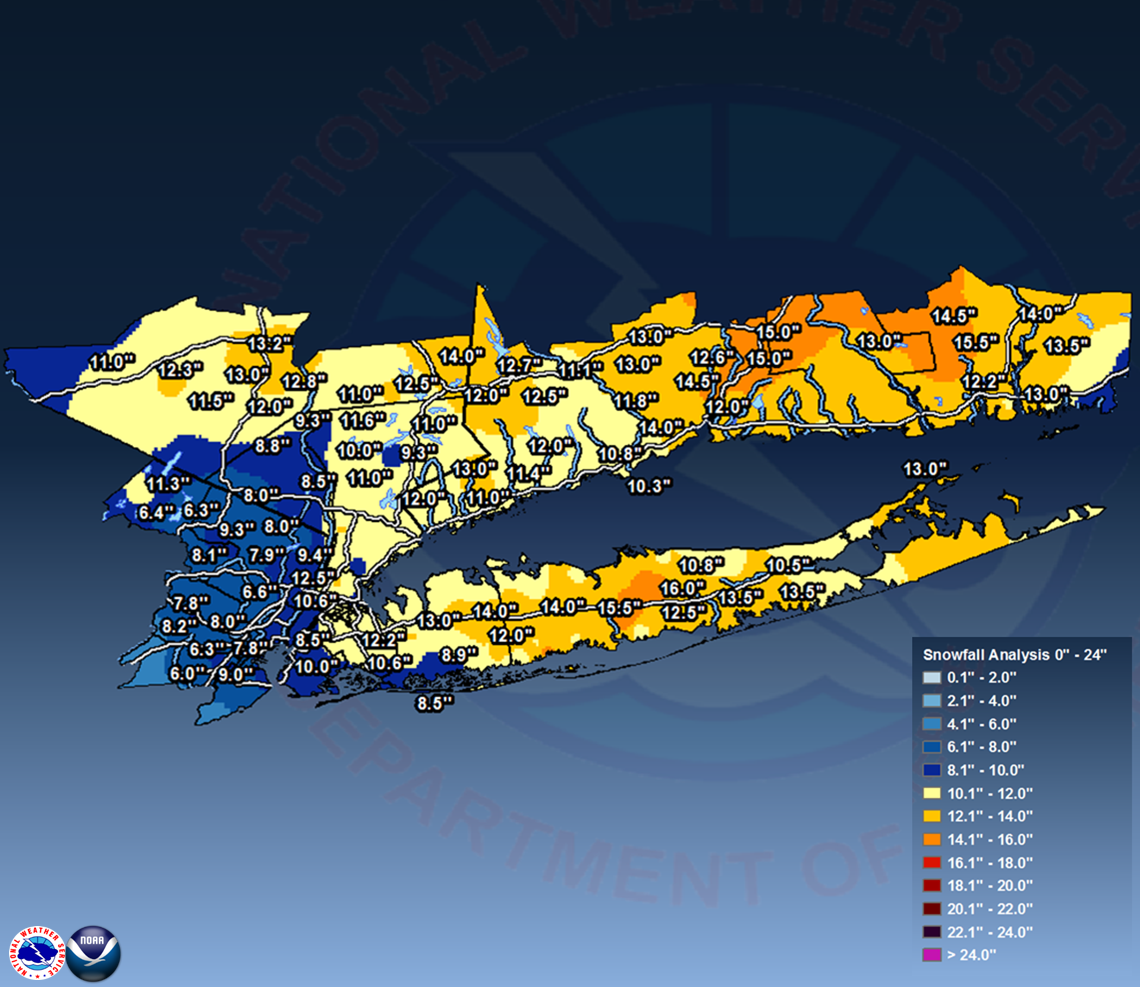
| New York |
LOCATION STORM TOTAL TIME/DATE COMMENTS
SNOWFALL OF
/INCHES/ MEASUREMENT
...BRONX COUNTY...
2 NNW BRONX 12.5 324 PM 2/09 PUBLIC
BRONX 10.6 315 PM 2/09 BRONX ZOO
1 ENE UNIONPORT 9.5 515 PM 2/09 CO-OP OBSERVER
...KINGS COUNTY...
MIDWOOD 10.0 500 PM 2/09 PUBLIC
MARINE PARK 9.5 400 PM 2/09 PUBLIC
SHEEPSHEAD BAY 9.0 430 PM 2/09 TRAINED SPOTTER
CLINTON HILL 8.5 310 PM 2/09 TRAINED SPOTTER
1 SSW BERGEN BEACH 7.0 600 PM 2/09 COCORAHS
...NASSAU COUNTY...
HICKSVILLE 14.0 430 PM 2/09 PUBLIC
JERICHO 13.0 545 PM 2/09 SOCIAL MEDIA
NEW HYDE PARK 12.2 700 PM 2/09 AMATEUR RADIO
ROSLYN 12.0 615 PM 2/09 PUBLIC
NORTH MASSAPEQUA 12.0 500 PM 2/09 PUBLIC
GLEN COVE 12.0 615 PM 2/09 PUBLIC
BETHPAGE 12.0 615 PM 2/09 PUBLIC
OLD BROOKVILLE 12.0 615 PM 2/09 PUBLIC
GARDEN CITY 12.0 615 PM 2/09 PUBLIC
EAST MEADOW 11.2 700 PM 2/09 TRAINED SPOTTER
MALVERNE 10.6 330 PM 2/09 TRAINED SPOTTER
OYSTER BAY 10.0 515 PM 2/09 TRAINED SPOTTER
FREEPORT 8.9 700 PM 2/09 AMATEUR RADIO
LONG BEACH 8.5 430 PM 2/09 PUBLIC
ROCKVILLE CENTRE 8.0 445 PM 2/09 PUBLIC
...NEW YORK COUNTY...
CENTRAL PARK 9.4 400 PM 2/09 PARK CONSERVANCY
...ORANGE COUNTY...
NEW WINDSOR 13.2 500 PM 2/09 PUBLIC
VAILS GATE 13.0 315 PM 2/09 TRAINED SPOTTER
CORNWALL ON HUDSON 12.8 345 PM 2/09 TRAINED SPOTTER
GOSHEN 12.3 347 PM 2/09 TRAINED SPOTTER
FORT MONTGOMERY 12.0 430 PM 2/09 TRAINED SPOTTER
MONROE 11.5 533 PM 2/09 TRAINED SPOTTER
MIDDLETOWN 11.0 531 PM 2/09 TRAINED SPOTTER
...PUTNAM COUNTY...
MAHOPAC 12.5 355 PM 2/09 TRAINED SPOTTER
LAKE PEEKSKILL 11.6 400 PM 2/09 PUBLIC
...QUEENS COUNTY...
CEDAR MANOR 11.8 530 PM 2/09 COCORAHS
MIDDLE VILLAGE 11.5 400 PM 2/09 COCORAHS
1 WSW WALDEN TERRACE 10.6 316 PM 2/09 COCORAHS
OAKLAND GARDENS 10.6 355 PM 2/09 AMATEUR RADIO
NYC/LA GUARDIA 10.0 400 PM 2/09 FAA OBSERVER
WHITESTONE 10.0 700 PM 2/09 AMATEUR RADIO
NYC/JFK AIRPORT 8.3 400 PM 2/09 FAA OBSERVER
...ROCKLAND COUNTY...
STONY POINT 8.8 545 PM 2/09 TRAINED SPOTTER
CONGERS 8.5 418 PM 2/09 TRAINED SPOTTER
...SUFFOLK COUNTY...
SELDEN 16.0 700 PM 2/09 AMATEUR RADIO
BOHEMIA 15.5 530 PM 2/09 PUBLIC
BABYLON 15.3 715 PM 2/09 SOCIAL MEDIA
LAKE RONKONKOMA 15.1 655 PM 2/09 TRAINED SPOTTER
ISLIP AIRPORT 14.3 700 PM 2/09 FAA OBSERVER
HAUPPAUGE 14.0 500 PM 2/09 NWS EMPLOYEE
NORTH BABYLON 14.0 500 PM 2/09 PUBLIC
SETAUKET 14.0 500 PM 2/09 PUBLIC
SMITHTOWN 13.8 500 PM 2/09 SOCIAL MEDIA
ISLIP 13.6 530 PM 2/09 TRAINED SPOTTER
COMMACK 13.5 445 PM 2/09 PUBLIC
MILLER PLACE 13.5 615 PM 2/09 PUBLIC
UPTON 13.5 700 PM 2/09 NWS OFFICE
EASTPORT 13.5 500 PM 2/09 PUBLIC
EAST ISLIP 13.5 715 PM 2/09 TRAINED SPOTTER
ORIENT 13.0 734 PM 2/09 TRAINED SPOTTER
SOUTH HUNTINGTON 12.9 530 PM 2/09 TRAINED SPOTTER
PATCHOGUE 12.5 623 PM 2/09 NWS EMPLOYEE
SAINT JAMES 12.5 745 PM 2/09 TRAINED SPOTTER
LINDENHURST 12.3 645 PM 2/09 TRAINED SPOTTER
WEST ISLIP 12.0 600 PM 2/09 TRAINED SPOTTER
MATTITUCK 11.8 500 PM 2/09 TRAINED SPOTTER
WEST BABYLON 11.7 330 PM 2/09 TRAINED SPOTTER
BAY SHORE 11.4 500 PM 2/09 NWS EMPLOYEE
MOUNT SINAI 11.0 630 PM 2/09 CO-OP OBSERVER
COPIAGUE 11.0 700 PM 2/09 AMATEUR RADIO
KINGS PARK 11.0 340 PM 2/09 AMATEUR RADIO
SOUND BEACH 10.8 500 PM 2/09 PUBLIC
RIVERHEAD 10.5 430 PM 2/09 NWS EMPLOYEE
SAYVILLE 10.4 400 PM 2/09 PUBLIC
GREENLAWN 10.3 343 PM 2/09 PUBLIC
RIDGE 10.2 515 PM 2/09 NWS EMPLOYEE
...WESTCHESTER COUNTY...
DOBBS FERRY 12.8 400 PM 2/09 PUBLIC
ARMONK 12.0 515 PM 2/09 PUBLIC
WHITE PLAINS 11.8 515 PM 2/09 AMATEUR RADIO
SOMERS 11.0 530 PM 2/09 TRAINED SPOTTER
JEFFERSON VALLEY 11.0 545 PM 2/09 TRAINED SPOTTER
OSSINING 11.0 515 PM 2/09 AMATEUR RADIO
IRVINGTON 10.3 600 PM 2/09 PUBLIC
1 SSW HARMON 10.0 430 PM 2/09 TRAINED SPOTTER
HASTINGS-ON-HUDSON 10.0 600 PM 2/09 PUBLIC
MOUNT VERNON 9.5 445 PM 2/09 PUBLIC
MOUNT KISCO 9.3 400 PM 2/09 PUBLIC
PEEKSKILL 9.3 358 PM 2/09 TRAINED SPOTTER
|
| Connecticut |
LOCATION STORM TOTAL TIME/DATE COMMENTS
SNOWFALL OF
/INCHES/ MEASUREMENT
...FAIRFIELD COUNTY...
NEW FAIRFIELD 14.0 730 PM 2/09 TRAINED SPOTTER
NEW CANAAN 13.0 500 PM 2/09 CT DOT
BROOKFIELD 12.7 630 PM 2/09 TRAINED SPOTTER
BETHEL 12.5 730 PM 2/09 FIRE DEPT/RESCUE
DANBURY 12.0 515 PM 2/09 AMATEUR RADIO
WESTON 12.0 400 PM 2/09 TRAINED SPOTTER
1 W SHELTON 11.8 430 PM 2/09 COCORAHS
2 ENE NEW CANAAN 11.4 430 PM 2/09 TRAINED SPOTTER
NEWTOWN 11.1 425 PM 2/09 COCORAHS
NORWALK 11.0 615 PM 2/09 PUBLIC
BRIDGEPORT AIRPORT 10.3 400 PM 2/09 CO-OP OBSERVER
...MIDDLESEX COUNTY...
HADDAM 13.0 500 PM 2/09 CT DOT
OLD SAYBROOK 13.0 500 PM 2/09 CT DOT
...NEW HAVEN COUNTY...
WALLINGFORD 15.0 341 PM 2/09 TRAINED SPOTTER
MERIDEN 15.0 500 PM 2/09 CT DOT
HAMDEN 14.5 630 PM 2/09 TRAINED SPOTTER
WEST HAVEN 14.0 500 PM 2/09 PUBLIC
BEACON FALLS 13.0 500 PM 2/09 CT DOT
WATERBURY 13.0 500 PM 2/09 CT DOT
CHESHIRE 12.6 345 PM 2/09 TRAINED SPOTTER
NEW HAVEN 12.0 500 PM 2/09 CT DOT
MADISON 11.8 830 PM 2/09 PUBLIC
MILFORD 10.8 500 PM 2/09 CT DOT
...NEW LONDON COUNTY...
SALEM 15.5 400 PM 2/09 PUBLIC
COLCHESTER 14.5 500 PM 2/09 CT DOT
NORWICH 14.0 700 PM 2/09 CT DOT
LEDYARD CENTER 13.5 700 PM 2/09 TRAINED SPOTTER
GROTON 13.0 500 PM 2/09 CT DOT
QUAKER HILL 12.2 530 PM 2/09 TRAINED SPOTTER
NEW LONDON 11.5 345 PM 2/09 PUBLIC
STONINGTON 9.5 400 PM 2/09 COCORAHS |
| New Jersey |
LOCATION STORM TOTAL TIME/DATE COMMENTS
SNOWFALL OF
/INCHES/ MEASUREMENT
...BERGEN COUNTY...
1 W TENAFLY 9.4 430 PM 2/09 COCORAHS
FRANKLIN LAKES 9.3 1150 AM 2/09 PUBLIC
LYNDHURST 8.0 1215 PM 2/09 AMATEUR RADIO
MAHWAH 8.0 1151 AM 2/09 TRAINED SPOTTER
WESTWOOD 8.0 1045 AM 2/09 TRAINED SPOTTER
RIDGEWOOD 7.9 1214 PM 2/09 TRAINED SPOTTER
EAST RUTHERFORD 6.6 348 PM 2/09 TRAINED SPOTTER
OAKLAND 6.3 1022 AM 2/09 TRAINED SPOTTER
HARRINGTON PARK 6.0 1023 AM 2/09 TRAINED SPOTTER
RAMSEY 6.0 1023 AM 2/09 TRAINED SPOTTER
...ESSEX COUNTY...
WEST ORANGE 8.2 1245 PM 2/09 PUBLIC
CEDAR GROVE 7.8 1130 AM 2/09 PUBLIC
NORTH CALDWELL 7.5 1237 PM 2/09 TRAINED SPOTTER
MAPLEWOOD 6.3 400 PM 2/09 COCORAHS
...HUDSON COUNTY...
HUDSON 8.7 300 PM 2/09 PUBLIC
HARRISON 5.5 355 PM 2/09 TRAINED SPOTTER
...PASSAIC COUNTY...
WEST MILFORD 11.3 419 PM 2/09 1300 FOOT ELEVATION
HAWTHORNE 8.1 700 PM 2/09 TRAINED SPOTTER
HASKELL 6.5 1200 PM 2/09 TRAINED SPOTTER
BLOOMINGDALE 6.4 1145 AM 2/09 TRAINED SPOTTER
...UNION COUNTY...
ELIZABETH 9.0 1115 AM 2/09 TRAINED SPOTTER
NEWARK AIRPORT 7.8 400 PM 2/09 FAA OBSERVER
LINDEN 6.0 1030 AM 2/09 TRAINED SPOTTER
|
..TIME... ...EVENT... ...CITY LOCATION... ...LAT.LON...
..DATE... ....MAG.... ..COUNTY LOCATION..ST.. ...SOURCE....
..REMARKS..
1100 AM NON-TSTM WND DMG ROCKY POINT 40.95N 72.93W
02/09/2017 SUFFOLK NY BROADCAST MEDIA
TREE DOWN ON FREYA ROAD NEAR EOS ROAD
1245 PM NON-TSTM WND DMG SOUTHOLD 41.06N 72.43W
02/09/2017 SUFFOLK NY TRAINED SPOTTER
TREE AND WIRES DOWN ON BUILDING. ...NEW HAVEN COUNTY...
|
LOCATION MAX WIND TIME/DATE COMMENTS
GUST OF
MPH MEASUREMENT
CONNECTICUT
...ANZ330...
1 S STONINGTON 54 116 PM 2/09 WXFLOW
1 NW RAYNHAM 50 230 PM 2/09 WXFLOW
...ANZ335...
2 ESE BELLE HAVEN 49 133 PM 2/09 WXFLOW
...FAIRFIELD COUNTY...
1 SSW STAMFORD 45 1250 PM 2/09 CWOP
BRIDGEPORT AIRPORT 45 1249 PM 2/09 ASOS
STAMFORD 44 1158 AM 2/09 CWOP
2 ENE FAIRFIELD 42 217 PM 2/09 CWOP
...NEW HAVEN COUNTY...
1 SSW STONY CREEK 48 346 PM 2/09 WXFLOW
MERIDEN AIRPORT 45 316 PM 2/09 ASOS
WATERBURY AIRPORT 45 250 PM 2/09 AWOS
NEW HAVEN AIRPORT 43 407 PM 2/09 ASOS
...NEW LONDON COUNTY...
1 NNE NEW LONDON 67 1239 PM 2/09 WXFLOW
4 ESE MYSTIC 54 116 PM 2/09 WXFLOW
GROTON AIRPORT 54 1251 PM 2/09 ASOS
3 ENE SALEM 43 1219 PM 2/09 CWOP
3 NNW NIANTIC 43 431 PM 2/09 CWOP
NEW JERSEY
...BERGEN COUNTY...
TETERBORO AIRPORT 49 642 PM 2/09 ASOS
...HUDSON COUNTY...
1 ENE BAYONNE 42 1209 PM 2/09 WXFLOW
...UNION COUNTY...
NEWARK AIRPORT 47 451 PM 2/09 ASOS
NEW YORK
...ANZ330...
3 N SHOREHAM 50 100 PM 2/09 WXFLOW
...ANZ335...
1 SSE GREENHAVEN 51 711 PM 2/09 WXFLOW
1 S MAMARONECK 44 1147 AM 2/09 WXFLOW
...ANZ338...
1 NE SAINT GEORGE 49 430 PM 2/09 WXFLOW
...ANZ345...
1 NW OAK BEACH 43 124 PM 2/09 WXFLOW
...NASSAU COUNTY...
SANDS POINT 59 705 PM 2/09 WXFLOW
1 E POINT LOOKOUT 51 1233 PM 2/09 WXFLOW
OYSTER BAY 50 1241 PM 2/09 EMERGENCY MNGR
2 NNE GLEN COVE 49 838 PM 2/09 WXFLOW
BAYVILLE 48 715 PM 2/09 WXFLOW
1 NNE OYSTER BAY 47 520 PM 2/09 WXFLOW
KINGS POINT 45 254 PM 2/09 WXFLOW
GLEN COVE LANDING 43 659 PM 2/09 WXFLOW
1 S PLAINVIEW 40 1215 PM 2/09 RAWS
...ORANGE COUNTY...
MONTGOMERY AIRPORT 40 432 PM 2/09 ASOS
...QUEENS COUNTY...
NYC/JFK AIRPORT 48 631 PM 2/09 ASOS
NYC/LA GUARDIA 44 504 PM 2/09 ASOS
1 S JACKSON HEIGHTS 43 637 PM 2/09 CWOP
2 WSW ROCKAWAY BEACH 41 839 PM 2/09 WXFLOW
...SUFFOLK COUNTY...
1 WSW MECOX 66 1225 PM 2/09 WXFLOW
4 NE CALVERTON 64 245 PM 2/09 CWOP
3 SE HAMPTON BAYS 61 1235 PM 2/09 WXFLOW
2 W HITHER HILLS STA 59 127 PM 2/09 WXFLOW
1 ESE NAPEAGUE 58 127 PM 2/09 WXFLOW
EATONS NECK 57 1220 PM 2/09 WXFLOW
1 ENE MONTAUK HIGHWA 55 240 PM 2/09 WXFLOW
1 E SAG HARBOR 50 100 PM 2/09 WXFLOW
1 SW MONTAUK 49 140 PM 2/09 CWOP
WESTHAMPTON AIRPORT 49 1226 PM 2/09 ASOS
1 N THREEMILE HARBOR 49 1221 PM 2/09 WXFLOW
1 NNW MATTITUCK 48 1139 AM 2/09 CWOP
ISLIP AIRPORT 48 147 PM 2/09 ASOS
MONTAUK AIRPORT 47 1154 AM 2/09 ASOS
1 S BLUE POINT 47 215 PM 2/09 WXFLOW
FARMINGDALE AIRPORT 45 152 PM 2/09 ASOS
ORIENT 45 1205 PM 2/09 CWOP
2 WSW FISHERS ISLAND 44 725 PM 2/09 WXFLOW
2 WNW CAPTREE STATE 43 124 PM 2/09 WXFLOW
1 SSE EAST MORICHES 43 226 PM 2/09 WXFLOW
2 ESE BUOY 44060 43 725 PM 2/09 WXFLOW
1 SW OAKVILLE 43 1153 AM 2/09 WXFLOW
RAMBLEWOOD MOBILE HO 41 705 PM 2/09 WXFLOW
CAPTREE STATE PARK 41 1204 PM 2/09 WXFLOW
...WESTCHESTER COUNTY...
1 SSW OSSINING 51 833 PM 2/09 WXFLOW
1 WSW SPARTA 50 833 PM 2/09 WXFLOW
WHITE PLAINS AIRPORT 43 1246 PM 2/09 ASOS
1 SSW MAMARONECK 40 1142 AM 2/09 WXFLOW
|
LOCATION MAX WIND TIME/DATE COMMENTS
SPEED OF
MPH MEASUREMENT
CONNECTICUT
...FAIRFIELD COUNTY...
BRIDGEPORT AIRPORT 31 1250 PM 2/09 ASOS
...MIDDLESEX COUNTY...
FENWICK 35 345 PM 2/09 HADS
...NEW HAVEN COUNTY...
3 SE BRANFORD 33 235 PM 2/09 AWS
...NEW LONDON COUNTY...
GROTON AIRPORT 35 626 PM 2/09 ASOS
NEW JERSEY
...HUDSON COUNTY...
WEEHAWKEN 32 1242 PM 2/09 URBANET
...UNION COUNTY...
NEWARK AIRPORT 32 451 PM 2/09 ASOS
NEW YORK
...KINGS COUNTY...
CROWN HEIGHTS 37 219 PM 2/09 URBANET
1 ENE BAY RIDGE 35 625 PM 2/09 URBANET
BAY RIDGE 34 200 PM 2/09 URBANET
CANARSIE 34 144 PM 2/09 URBANET
1 W FLATBUSH 33 424 PM 2/09 URBANET
CONEY ISLAND 31 449 PM 2/09 URBANET
...QUEENS COUNTY...
NYC/JFK AIRPORT 38 631 PM 2/09 ASOS
4 ENE ROCKAWAY BEACH 35 135 PM 2/09 AWS
NYC/LA GUARDIA 35 504 PM 2/09 ASOS
2 NNE JAMAICA 31 245 PM 2/09 URBANET
...RICHMOND COUNTY...
1 S BAYONNE 43 504 PM 2/09 URBANET
...SUFFOLK COUNTY...
ISLIP AIRPORT 38 148 PM 2/09 ASOS
|
 | |
| Regional radar mosaic from 3 am until 7 pm | Hourly regional radar Mosaic starting 9 am until 3 pm including Earth Networks Total Lightning. + or - a cloud to ground and . are in cloud flashes |
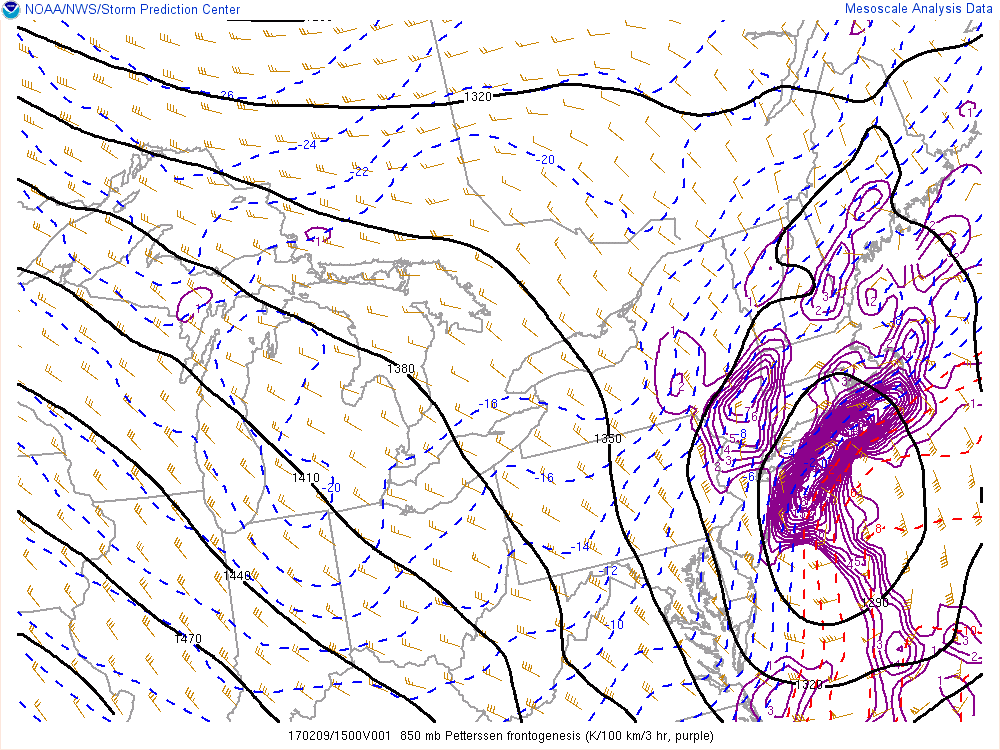
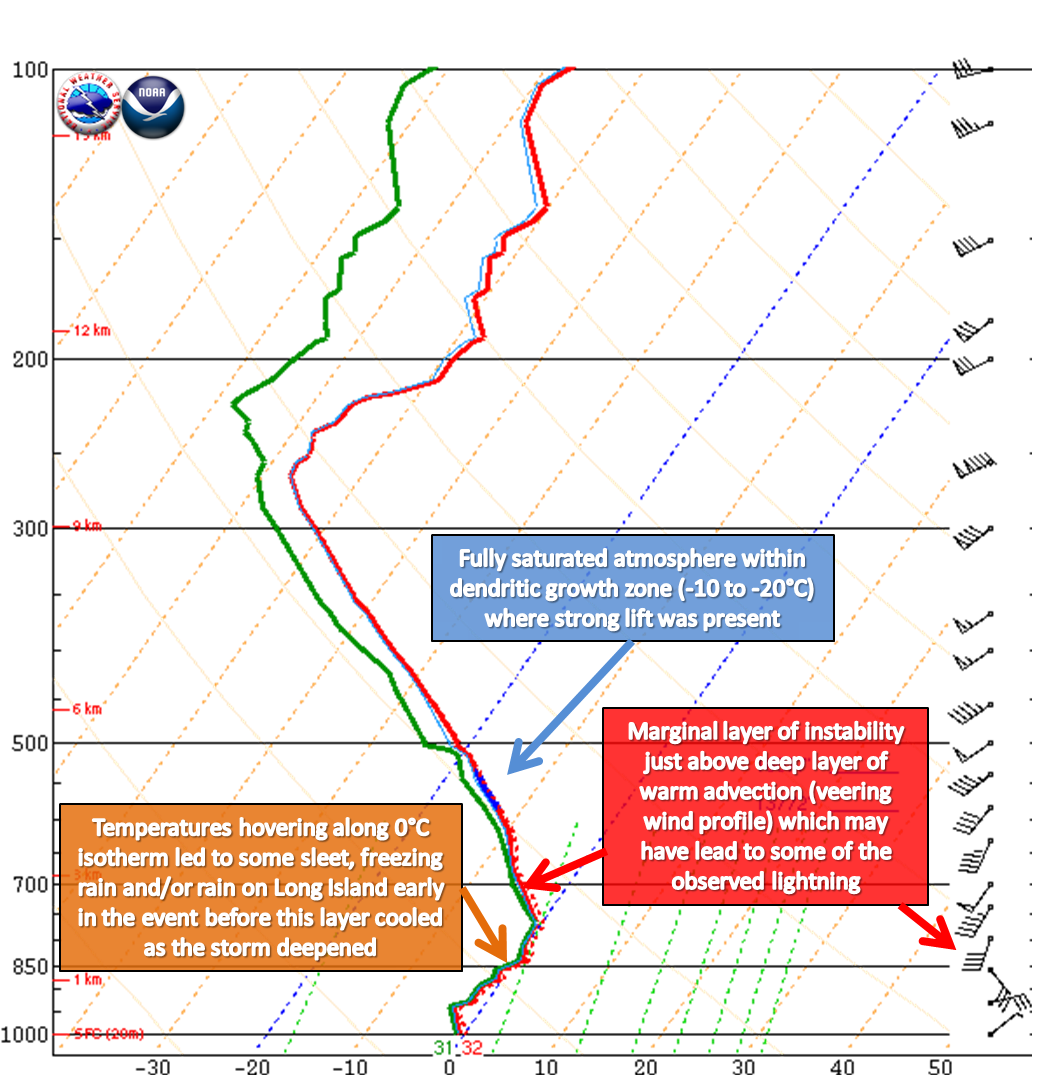 |
 |
...SUMMARY OF THE BLIZZARD OF FEBRUARY 9 2017...
THE INFORMATION IN THIS STATEMENT IS PRELIMINARY AND SUBJECT TO
FURTHER VERIFICATION BY THE NATIONAL WEATHER SERVICE.
A BLIZZARD OCCURRED OVER PORTIONS OF LONG ISLAND...SOUTHERN
CONNECTICUT AND COASTAL PORTIONS OF THE LOWER HUDSON VALLEY ON
FEBRUARY 9 2017...FROM AFTER SUNRISE INTO THE LATE AFTERNOON HOURS.
THE DEFINITION OF A BLIZZARD:
- SUSTAINED WINDS OR FREQUENT GUSTS GREATER THAN OR EQUAL TO 35
MPH
- CONSIDERABLE FALLING AND/OR BLOWING SNOW
- VISIBILITY FREQUENTLY REDUCED TO LESS THAN 1/4 OR MILE
- OCCURS FOR THREE HOURS OR MORE
WHEN REVIEWING WHETHER A PARTICULAR OBSERVATION LOCATION HAD
BLIZZARD CONDITIONS...VISIBILITIES EQUAL TO 1/4 MILE WERE
COUNTED. THIS IS BECAUSE THESE ARE QUITE LOW FOR AN AUTOMATED
VISIBILITY SENSOR TO DETECT.
AT LONG ISLAND MACARTHUR AIRPORT (ISLIP NY)...BLIZZARD CRITERIA
WAS MET FOR 7 HOURS AMD 23 MINUTES...FROM 822 AM TO 218 PM AND
FROM 256 PM TO 423 PM.
AT CHESTER AIRPORT (CHESTER CT)...BLIZZARD CRITERIA WAS MET FOR 4
HOURS AND 40 MINUTES FROM 1015 AM TO 255 PM.
AT IGOR I SIKORSKY MEMORIAL AIRPORT (BRIDGEPORT CT)...BLIZZARD
CRITERIA WAS MET FOR 4 HOURS 21 MINUTES...FROM 852 AM TO 113 PM.
AT WATERBURY-OXFORD AIRPORT (OXFORD CT)...BLIZZARD CONDITIONS WAS
MET FOR 3 HOURS FROM 850 AM TO 1050 AM AND FROM 1250 PM TO 150
PM.
AT WEST CHESTER COUNTY AIRPORT (WHITE PLAINS NY)...BLIZZARD
CONDITIONS WERE MET FOR 3 HOURS...FROM 9:56 AM TO 1256 PM.
IT ALSO WAS DETERMINED THAT A BLIZZARD ALSO OCCURRED AT
FARMINGDALE NY...NEW HAVEN CT...WESTHAMPTON BEACH NY AND GROTON
CT.
AT REPUBLIC AIRPORT (FARMINGDALE NY)...BLIZZARD CRITERIA WAS MET
FOR 6 HOURS AND 38 MINUTES FROM 733 AM TO 211 PM. THE PRESENT
WEATHER SENSOR FAILED AT 915 AM (SNOW VERIFIED BY RADAR).
AT TWEED NEW HAVEN AIRPORT (NEW HAVEN CT)...BLIZZARD CRITERIA WAS
MET FOR 5 HOURS 36 MINUTES FROM 853 AM TO 129 PM. THE PRESENT
WEATHER SENSOR FAILED FROM 1137 AM TO 1228 PM (SNOW VERIFIED BY
RADAR).
AT FRANCIS S GABRESKI AIRPORT (WESTHAMPTON BEACH NY)...BLIZZARD
CRITERIA WAS MET FOR 5 HOURS AND 29 MINUTES FROM 953 AM TO 244 PM
AND FROM 317 PM TO 353 PM. THE PRESENT WEATHER SENSOR DID NOT
OPERATE DURING THIS TIME FRAME (SNOW VERIFIED BY RADAR).
AT GROTON-NEW LONDON AIRPORT (GROTON CT)...BLIZZARD CRITERIA WAS
MET FOR 4 HOURS AND 23 MINUTES FROM 1030 AM TO 253 PM. THE PRESENT
WEATHER SENSOR FAILED AT 1044 AM (SNOW VERIFIED BY RADAR).
IT IS POSSIBLE THAT BLIZZARD CONDITIONS ALSO OCCURRED AT EAST
HAMPTON NY...BUT FAILURE OF THE VISIBILITY...WIND AND PRESENT
WEATHER SENSORS DURING THE EVENT REQUIRE ADDITIONAL INFORMATION
TO VERIFY.
ELSEWHERE ACROSS THE TRI-STATE...NEAR BLIZZARD CONDITIONS OCCURRED
AT SOUTH OZONE PARK NY...EAST ELMHURST NY...NEWARK NJ...
TETERBORO NJ AND MERIDEN CT. AT SOUTH OZONE PARK NEW YORK (JOHN F
KENNEDY INTERNATIONAL AIRPORT) BLIZZARD CONDITIONS OCCURRED FOR
37 MINUTES...OTHERWISE GUSTS WERE SUFFICIENT...BUT VISIBILITIES
WERE FREQUENTLY AROUND 1/2 MILE. AT EAST ELMHURST NY (LA GUARDIA
AIRPORT)...NEWARK NJ (NEWARK LIBERTY INTERNATIONAL AIRPORT)...
TETERBORO NJ (TETERBORO AIRPORT) AND MERIDEN CT (MERIDEN MARKHAM
MUNICIPAL AIRPORT) VISIBILITIES WERE SUFFICIENTLY LOW...BUT
FREQUENT GUSTS WERE BELOW 35 MPH DURING THE TIME VISIBILITIES
WERE LOW.
|
National Weather Service WFO New York, NY Watches, Warnings, and Advisories
The following links show each Blizzard Watch, Blizzard Warning, Winter Storm Watch, Winter Storm Warning, and Special Weather Statements issued during this winter storm. The Winter Strom Watch was issued at 3:22 pm Tuesday, February 7, 2017. The Winter Storm Warning was issued at 3:42 am Wednesday, February 8, 2017. First Blizzard Warnings were issued at 3:17 pm Wednesday, February 8, 2017.
Climate/Past Weather
Local Past Weather
Recent and Past Rainfall
Local Normals, Extremes and Records
Tropical Cyclone Reports
Current Conditions
Observations (List)
Observations (Map)
Marine Obs (Map)
Local Storm Report
Public Information Statement
Office Programs
Air Quality
Aviation Weather
Coastal Flooding
Co-op Observers
Fire Weather
Heat
Hydrology/Freshwater Flooding
Marine Weather
Outreach
Severe Weather
SKYWARN
Tropical Weather
Tsunami
Winter Weather
Upper Air
Weather Safety/Preparedness
Weather Ready Nation
Storm Ready
NOAA Weather Radio
Pubs/Brochures/Booklets
More Safety Links
US Dept of Commerce
National Oceanic and Atmospheric Administration
National Weather Service
New York, NY
175 Brookhaven Avenue
Upton, NY 11973
631-924-0517
Comments? Questions? Please Contact Us.
Thank you for visiting a National Oceanic and Atmospheric Administration (NOAA) website. The link you have selected will take you to a non-U.S. Government website for additional information.
NOAA is not responsible for the content of any linked website not operated by NOAA. This link is provided solely for your information and convenience, and does not imply any endorsement by NOAA or the U.S. Department of Commerce of the linked website or any information, products, or services contained therein.
You will be redirected to:








 Coastal Flooding
Coastal Flooding